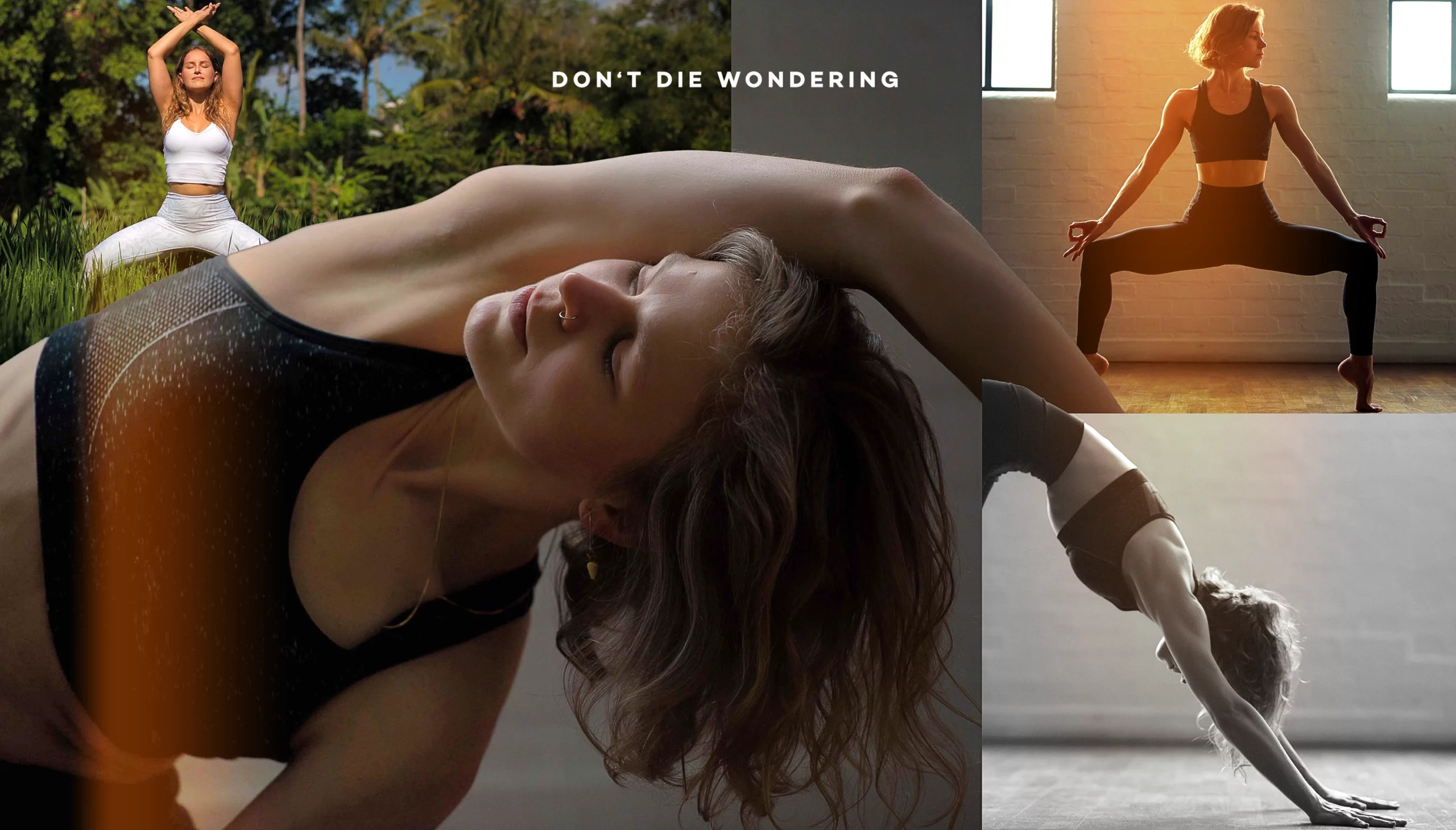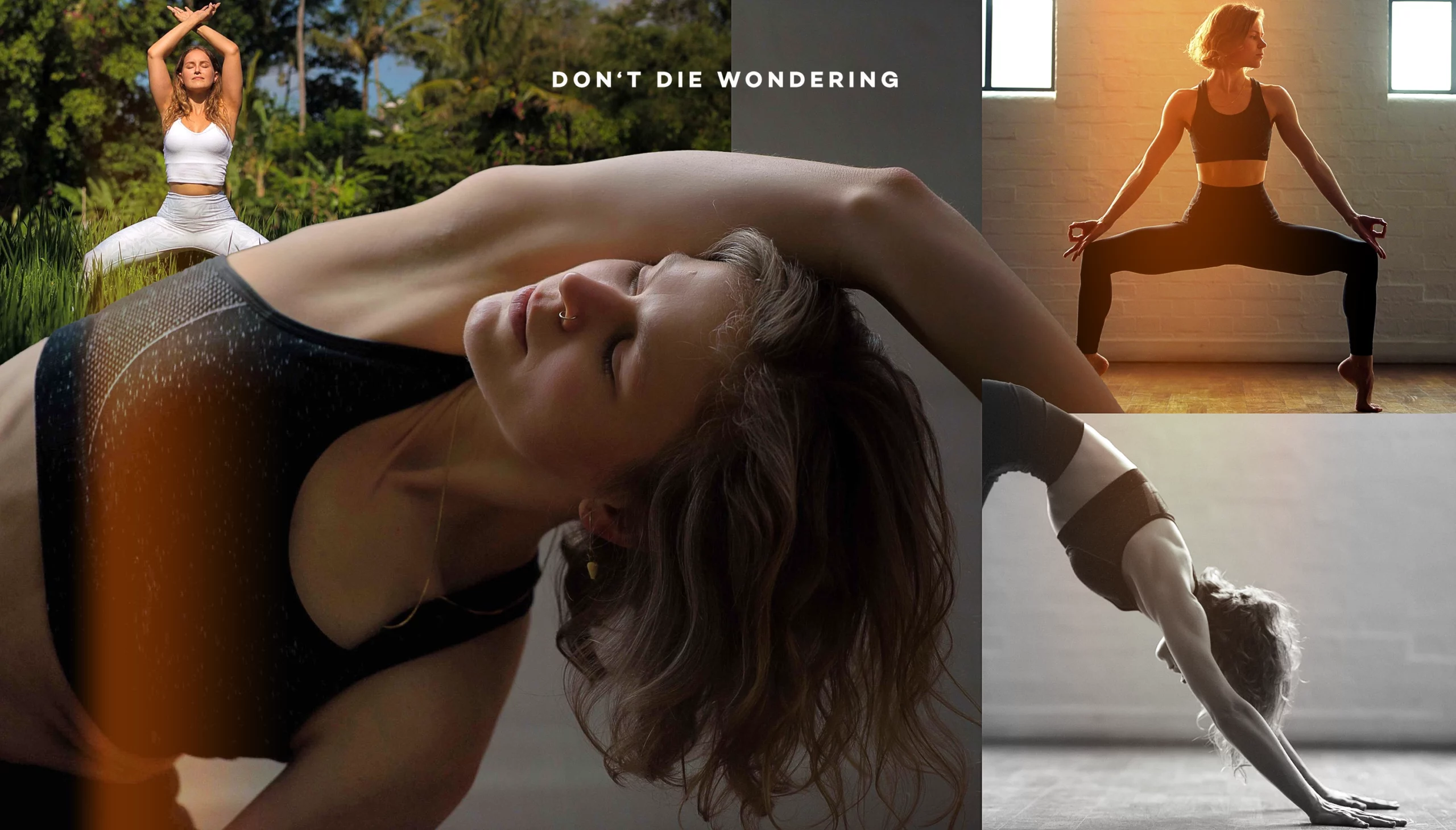From relaxing to invigorating, you can find a bit of everything in yoga. Here is every single style of yoga explained.
Yoga, a practice that has become synonymous with wellness, inner peace, and physical vitality, is as diverse as the people who practice it. With roots tracing back thousands of years in ancient India, yoga is a discipline that harmonises the body, mind, and spirit. Yet, for many, the sheer variety of yoga style can be overwhelming. From the vigorous flow of Vinyasa to the serene stillness of Yin, each type of yoga offers unique benefits and caters to different needs. In this article, we’ll explore the most prominent types of yoga, delving into their origins, what they consist of, and a few fun facts to keep things interesting.

1. Hatha Yoga: The Foundation of All Yoga
Origin: Hatha Yoga is the foundation of modern yoga practice. Its name derives from ancient Sanskrit, where “Ha” represents the sun and “Tha” symbolises the moon, indicating the balance it seeks to achieve within us. Hatha Yoga’s history dates back to around the 15th century, with the seminal text “Hatha Yoga Pradipika” being one of its most significant sources.
What It Consists Of: Hatha Yoga is a gentle introduction to the physical side of yoga. It involves a series of asanas (postures) combined with pranayama (breathing exercises) and meditation (dhyana). The pace is slow, allowing beginners to focus on alignment and breathing.
Fun Fact: Hatha Yoga serves as the umbrella term for many modern yoga styles, including Vinyasa, Ashtanga, and Iyengar. So, if you’ve ever taken a yoga class, chances are, you’ve practised some form of Hatha Yoga.
2. Vinyasa Yoga: The Dance of Yoga
Origin: Vinyasa Yoga is a modern style that evolved from the Hatha tradition. The word “Vinyasa” translates to “to place in a special way,” reflecting the flow and sequence of movements that characterise this style.
What It Consists Of: Vinyasa is known for its fluid transitions, where each movement is synchronised with the breath. This creates a flowing, almost dance-like practice that can be invigorating and meditative. Unlike some other yoga styles, no two Vinyasa classes are the same, as instructors often create unique sequences.
Fun Fact: The creative nature of Vinyasa Yoga means that it is continually evolving, with some classes incorporating music, themed flows, or even elements from other fitness disciplines.
3. Ashtanga Yoga: The Path of Rigorous Discipline
Origin: Ashtanga Yoga was developed by K. Pattabhi Jois in the 20th century, drawing from ancient yoga texts and the teachings of T. Krishnamacharya, one of the most influential yoga masters of the modern era.
What It Consists Of: Ashtanga Yoga is a highly structured and physically demanding practice. It involves performing a set sequence of postures in the same order each time, often referred to as a series. There are six series in total, each progressively more challenging. Ashtanga also places a strong emphasis on Ujjayi breathing, a specific breath control technique.
Fun Fact: Dedicated Ashtanga practitioners often memorise the sequence, enabling them to practise without the guidance of an instructor. This style is also credited with popularising yoga in the West, particularly in the 1970s.

4. Iyengar Yoga: Precision and Alignment
Origin: Founded by B.K.S. Iyengar, this style of yoga emerged in the 20th century and was shaped by Iyengar’s personal experiences with illness and injury.
What It Consists Of: Iyengar Yoga is all about precision and alignment. It uses props such as blocks, straps, and blankets to help practitioners achieve the correct form in each posture. The goal is to perform each asana with perfect alignment to maximise its benefits and minimise the risk of injury.
Fun Fact: Iyengar Yoga is often used in therapeutic settings due to its focus on anatomy and alignment, making it an excellent choice for those recovering from injury or dealing with chronic pain.
5. Bikram Yoga: Sweat It Out
Origin: Bikram Yoga, also known as “Hot Yoga,” was developed by Bikram Choudhury in the 1970s. It’s designed to replicate the climate of India, where traditional yoga originated.
What It Consists Of: This style involves a set sequence of 26 postures and two breathing exercises, performed in a room heated to around 105°F (40°C) with 40% humidity. The heat is intended to promote detoxification, increase flexibility, and prevent injury.
Fun Fact: The rigid structure of Bikram Yoga means that no matter where you take a class, the sequence remains the same. Bikram designed this consistency to ensure that practitioners always work every part of their body.
6. Kundalini Yoga: The Yoga of Awareness
Origin: Kundalini Yoga has ancient roots, with practices that can be traced back to the Upanishads and the Tantras. However, it was popularised in the West by Yogi Bhajan in the 1960s.
What It Consists Of: Kundalini Yoga is a spiritual practice that combines physical postures, breathwork, chanting (mantras), and meditation to awaken the Kundalini energy at the base of the spine. This energy is believed to rise through the chakras, leading to spiritual enlightenment and self-awareness.
Fun Fact: Kundalini Yoga often involves wearing white clothing and a turban, which practitioners believe enhances the aura and creates a focused meditative experience.
7. Yin Yoga: The Art of Stillness
Origin: Yin Yoga was developed in the late 20th century by Paulie Zink, a martial artist, and later refined by Paul Grilley and Sarah Powers.
What It Consists Of: Yin Yoga focuses on passive postures that are held for longer periods, typically three to five minutes. This style targets deep connective tissues like ligaments, joints, and fascia, promoting flexibility and circulation.
Fun Fact: Yin Yoga is often considered the perfect complement to more active, yang-like practices such as Vinyasa or Ashtanga, balancing the body’s energies and fostering deep relaxation.

8. Restorative Yoga: The Yoga of Rest
Origin: Restorative Yoga was developed by Judith Hanson Lasater, a student of B.K.S. Iyengar, in the 1970s.
What It Consists Of: This deeply relaxing style of yoga uses props like blankets, bolsters, and blocks to support the body in gentle poses. The focus is on relaxation and healing, with poses often held for 10 minutes or more.
Fun Fact: Restorative Yoga is sometimes referred to as “active relaxation” because it encourages complete rest while still engaging in a mindful practice. It’s a favourite for those dealing with stress, anxiety, or chronic illness.
9. Power Yoga: Yoga for Fitness
Origin: Power Yoga emerged in the 1990s, inspired by Ashtanga Yoga but adapted to be more accessible to Western students. It was popularised by figures like Beryl Bender Birch and Bryan Kest.
What It Consists Of: Power Yoga is a vigorous and fitness-oriented style that focuses on building strength, flexibility, and endurance. It’s less structured than Ashtanga, allowing for more variety and creativity in sequences.
Fun Fact: Power Yoga gained popularity in gym settings, attracting those looking for a challenging workout rather than traditional spiritual or meditative aspects of yoga.
10. Sivananda Yoga: The Yoga of the Five Points
Origin: Sivananda Yoga was founded by Swami Sivananda and his disciple Swami Vishnudevananda in the 1950s.
What It Consists Of: Sivananda Yoga follows a set sequence of 12 basic postures, with a focus on five core principles: proper exercise (asana), proper breathing (pranayama), proper relaxation (savasana), proper diet (vegetarianism), and positive thinking (meditation). This holistic approach is designed to promote overall well-being and spiritual growth.
Fun Fact: Sivananda Yoga encourages a vegetarian diet as part of its holistic approach to health and wellness, aligning with the yogic principle of ahimsa, or non-violence.
11. Jivamukti Yoga: Yoga with a Message
Origin: Jivamukti Yoga was developed by Sharon Gannon and David Life in New York City in 1984. It combines the physical practice of yoga with a strong emphasis on ethical living.
What It Consists Of: Jivamukti integrates physical postures, chanting, music, meditation, and spiritual teachings into one cohesive practice. It places a strong emphasis on non-violence, veganism, and environmentalism, making it more than just a physical practice but a way of life.
Fun Fact: The name “Jivamukti” means “liberation while living,” reflecting the founders’ belief that spiritual enlightenment can be achieved in this lifetime.
12. Anusara Yoga: Flowing with Grace
Origin: Anusara Yoga was founded by John Friend in 1997. It draws from Hatha Yoga and incorporates Tantric philosophy.
What It Consists Of: Anusara emphasises alignment and heart-opening postures. The philosophy behind Anusara focuses on the intrinsic goodness of all beings and seeks to express this through the physical practice.
Fun Fact: “Anusara” translates to “flowing with grace” or “following your heart,” and classes often include themes related to joy, love, and divine energy.
13. Kripalu Yoga: The Yoga of Compassion
Origin: Kripalu Yoga was developed at the Kripalu Center for Yoga & Health in Massachusetts, USA, and is inspired by the teachings of Swami Kripalvananda.
What It Consists Of: Kripalu Yoga is a gentle, introspective style that encourages students to explore their body’s limits and focus on breath, alignment, and mindfulness. It is often divided into three stages: willful practice, willful surrender, and meditation in motion.
Fun Fact: Kripalu classes are known for their emphasis on listening to the body’s wisdom, making it accessible to all ages and abilities. It’s often referred to as the yoga of compassion.

14. Viniyoga: Yoga Tailored to You
Origin: Viniyoga was developed by T.K.V. Desikachar, the son of the legendary yogi T. Krishnamacharya, in the 20th century.
What It Consists Of: Viniyoga is a highly personalised type of yoga that adapts postures, sequences, and breathwork to meet the individual’s needs. Whether for physical, emotional, or spiritual growth, Viniyoga is tailored to the practitioner.
Fun Fact: The adaptability of Viniyoga makes it particularly beneficial for those recovering from injury or dealing with chronic conditions, as the practice can be modified to suit the practitioner’s unique circumstances.
15. Integral Yoga: The Holistic Approach
Origin: Integral Yoga was founded by Sri Swami Satchidananda in the 1960s and is a comprehensive system that integrates various yogic paths.
What It Consists Of: Integral Yoga combines Hatha Yoga (physical postures), Karma Yoga (selfless service), Bhakti Yoga (devotion), Jnana Yoga (wisdom), and Raja Yoga (meditation) into one cohesive practice. The goal is to promote a balanced life that nurtures the body, mind, and spirit.
Fun Fact: Integral Yoga is often referred to as “yoga for everyone” because of its holistic approach, which can be adapted to suit any individual, regardless of age or ability.


